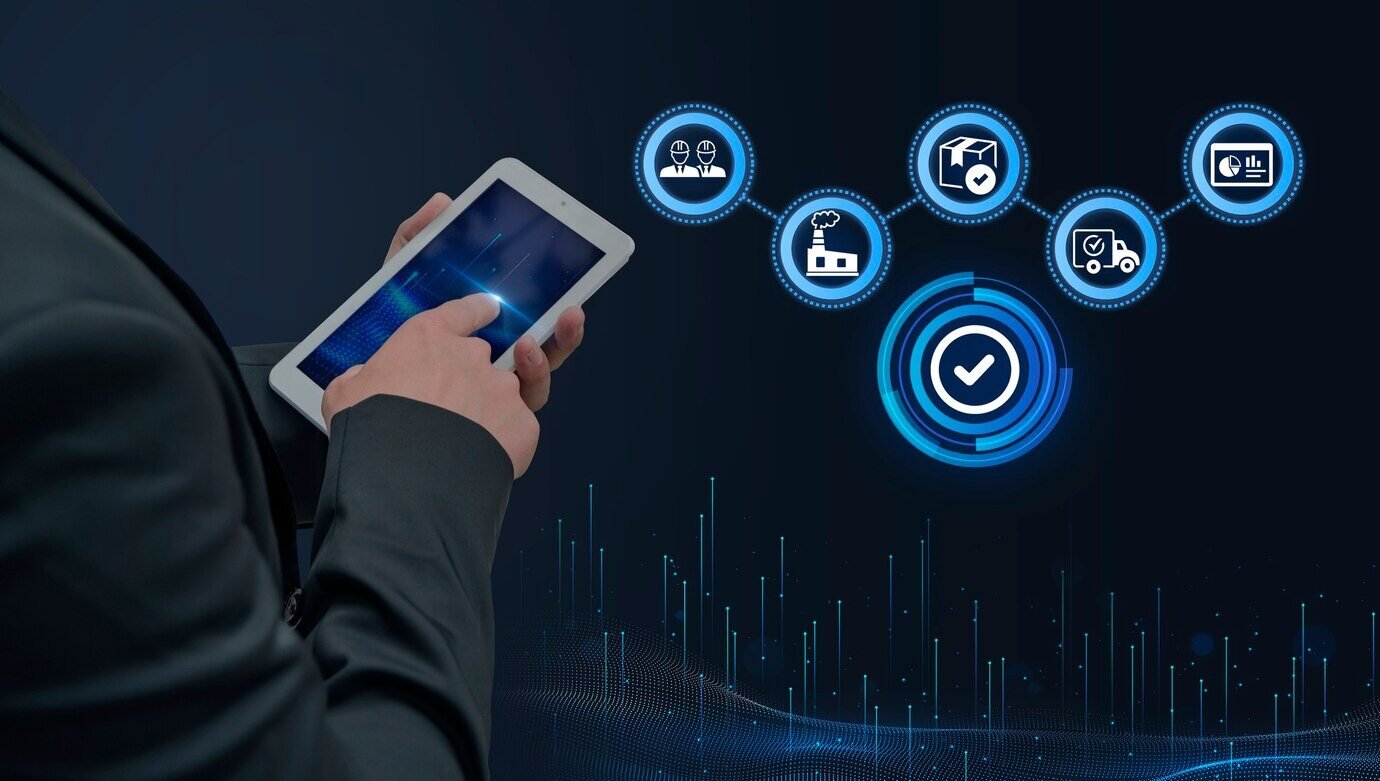Introduction
In the world of B2B commerce, the order-to-cash (O2C, tied to A/R) and procure-to-pay (P2P, tied to A/P) cycles manage the transaction journey between buyers and suppliers. These processes are critical to happy customers, operational efficiency, and financial health. Software and fintech have automated some of these flows, but many pain points remain. In this article, we examine the current state of A/R and A/P software & fintech, highlighting remaining pain points and discussing the tremendous opportunity for B2B fintech achieve growth by continuing to solve these challenges.
The Order-to-Cash and Procure-to-Pay Processes
.png?width=840&height=646&name=Slide2%20(1).png)
Order-to-Cash: The Revenue Pipeline
Order-to-Cash (O2C) process, also referred to as the ‘revenue pipeline’ for suppliers, often associated with A/R automation, includes all activities related to receiving and fulfilling customer orders, invoicing, and collecting payment. From the moment a customer places an order to the point of cash receipt, O2C involves multiple steps including:
- Order Management & Fulfillment: Receiving and processing customer orders including packaging/delivery of goods or services
- Credit Management: Assessing buyer creditworthiness before confirming orders including setting credit limits and tailoring payment terms (e.g., setting invoice duration and stipulating accepted payment types)
- Invoicing: Generating and sending invoices to customers, often with several flavors (e.g., standard, pro forma, recurring, interim/progressive, timesheet, purchase-order-linked, etc.)
- Payment Remittance & Collection: Receiving payment instructions (e.g., payment type, credentials, amount, timing) and funding of the supplier’s bank account
- Reconciliation: Matching payments and remittance data to invoices and internal system of record (e.g., accounting/ERP system)
When managed effectively, O2C ensures a steady cash flow, but delays can strain cash reserves, disrupt budgeting, and lead to higher operational costs.
Procure-to-Pay (P2P): The Spending Pipeline
On the spending side, the P2P cycle, often associated with A/P automation, includes steps from identifying suppliers to paying for goods/services. The P2P process is crucial for managing supplier relationships, optimizing costs, and maintaining supply chain stability. The key stages of the P2P process include:
- Supplier Identification & Selection: Sourcing and selecting suppliers, often involving compliance checks and vetting in traditional B2B transactions (vs. B2B marketplace transactions)
- Purchase Order (PO) Creation: Issuing a PO that specifies expected terms and pricing (typically aligned with the final invoice)
- Receipt of Goods/Services: Confirming delivery and quality of goods or services
- Invoice Verification & Processing: Executing a three-way match across (i) purchase order, (ii) receiving report (e.g., a receipt with quantities and SKUs), and (iii) supplier invoice with the total amount due
- Payment Remittance & Processing: Sending payment instructions (e.g., issuing a virtual card, preparing ACH instructions, informing supplier that a paper check was sent)
- Reconciliation: Matching payments (e.g., bank statements) and remittance data (including three-way match) to internal system of record (e.g., accounting/ERP system)
An efficient P2P cycle helps businesses control costs and improve supplier relationships, but inefficiencies in this area can lead to missed opportunities, wasted resources, and financial strain.
B2B Workflow and Financial Services Many Pain Points
Both O2C and P2P workflows present challenges, especially when manual processes are involved. In Figure 2, we highlight pain points raised by small and mid-size businesses across surveys conducted by Flagship over the past 6 months.
.png?width=766&height=736&name=Slide3%20(1).png)
The most prominent pain points include:
- Buyer/Supplier Relationship Management: For both sides of the equation, it is often a challenge to manage and update business information and preferences (e.g., changes in bank account info, early payment discount eligibility, card vs. ACH acceptance, net-30 vs. 60-day terms, etc.).
- Manual Data Entry and Inaccuracies: Manual entry of invoices, remittance data, and reconciliation creates room for errors, missed payments, and delayed revenue.
- Lack of Payment Visibility: Without real-time tracking, both O2C and P2P processes suffer from delayed or incomplete information on payment status, making cash flow management a challenge.
- Disparate Systems: Businesses (still) use separate systems for orders, payments, and accounting with often light (or no) integration, resulting in data silos and cumbersome reconciliation processes.
- Payment Timing Delays: Outstanding invoices and write-offs still plague suppliers, with average payment duration increasing over time (Refer to Figure 3)
- Cost of Payment Acceptance: While the benefits of digital payments are clear, there is a direct cost of acceptance (especially on virtual cards) that suppliers struggle to manage, sometimes opting for less efficient payment methods (e.g., traditional ACH or paper check) to avoid costs (but therefore exasperating some of the challenges above).
- Time-Consuming Dispute Resolution: Errors in invoicing or payment reconciliation can lead to disputes that delay payments, disrupt cash flow, and damage relationships.
.png?width=774&height=581&name=Slide4%20(1).png)
The persistence of paper within B2B flows, be it invoices, check payments, or other, underscores many of the manual processes that exist today. Flagship estimates that 38% of total B2B payments volume in the U.S. is still processed via paper checks (see Figure 4). Check conversion helps, but not relative to the future state in which digital invoices directly initiate digital payments (supported by programmatic controls).
.png?width=729&height=595&name=Slide5%20(1).png)
B2B SaaS & Fintech Solving Business Challenges
Broken B2B processes create tremendous demand growth for B2B fintech, where providers have and are evolving with feature rich automation plus embedded payments and finance offerings. B2B fintechs position to solve specific pain points with their solutions, which we describe in Figure 5. Core to the success of these fintechs are their integrations into both horizontal (e.g., accounting) and vertical (e.g., wholesale trade) software platforms. We acknowledge that the lines between software-DNA companies and fintech-DNA companies in B2B is increasingly blurry.

U.S. B2B fintechs are achieving excellent growth on the back of surging demand for their problem-solving solutions. Figure 6 shows the revenue growth of some of the publicly listed B2B fintechs, with this small sample achieving topline growth of 15-42%.
.png?width=847&height=730&name=Slide7%20(1).png)
Conclusions
As the B2B payments ecosystem evolves, the challenge and opportunity lie in reimagining the O2C and P2P cycles, beyond basic automation of legacy ways-of-working. For the fintech industry, the opportunity is clear: process automation attached to embedded finance. With trillions of dollars at play and innovation tailwinds such as AI, the opportunity is riper than ever. Fintechs that enable deeper digital collaboration between buyers and suppliers, integrate seamlessly into surrounding horizontal and/or vertical software platforms, and deliver rich embedded finance services will thrive on residual paper and processes finally fade away.
Please do not hesitate to contact Rom Mascetti at Rom@FlagshipAP.com with comments or questions.



